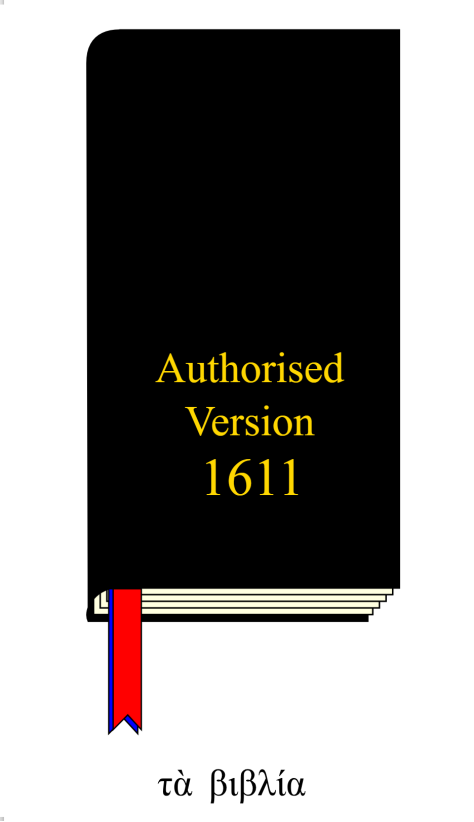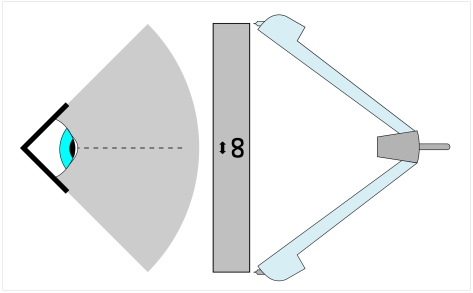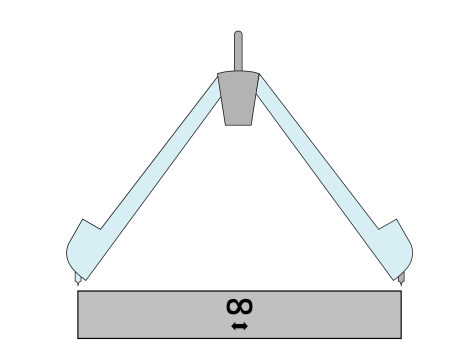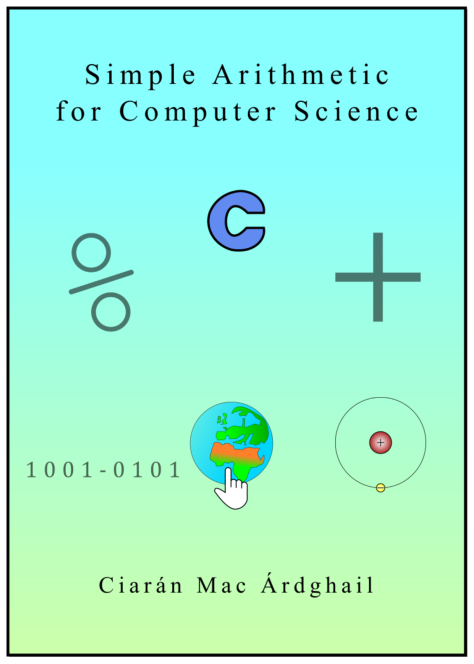Below is a Word-Document Version of this blog post:
final_epistomology_recovered_algorithms
Below is a pdf Version of this blog post:
final_epistomology_recovered_algorithms

Figure 1: The Ancient-Greek word ‘EPISTEME’ which means ‘knowledge’ wrought into the Blacksmith’s monument outside Monaghan Courthouse. Monaghan is such a cultured little burg!
In science and philosophy, Epistemology is the study of knowledge, and what constitutes knowledge.
In Computer programming, we have to think epistemologically about knowledge; what constitutes knowledge; and what forms it may take.
In Computer programming, knowledge is deemed to have two forms:
- Declarative,
- Imperative.
The term, ‘imperative,’ denotes a command. ‘Imperative Knowledge’ is knowledge that instructs one on how to do something by giving him/her a set of commands.
If I told you that porridge consisted of oats and heated water, then this would be ‘declarative knowledge.’
If, instead, I gave you a set of instructions on how to make porridge such as:
RECIPE:
INGREDIENTS:
METHOD:
Measure out 80 grams of oats. Measure out 160 millilitres of water. Combine the oats and water in a pot. Heat the pot over a hob until it reaches boiling point, stirring all the while. Keep the oats-and-water mixture at boiling point for three minutes. Take the porridge off the hob. Serve.
then the above would be an example of imperative knowledge.
Above, we see the two types of knowledge in action: declarative and imperative. The declarative form of knowledge tells you what porridge is. The imperative form of knowledge consists of a series of instructions that enables you to make porridge.
As you can see, the verbs that I use in telling you how to make porridge are, grammatically, in the imperative mood:
‘measure…’
‘combine…’
‘heat…’
‘keep…’
‘take…’
‘serve…’
In grammar, the imperative mood denotes a verb in its command form.
A series of commands that enables one to prepare a foodstuff is termed a ‘recipe.’ Very often, Computer Scientists will refer to algorithms as ‘recipes.’
In cookery, a recipe is a series of commands that allows one to prepare a foodstuff.
In computer science, an algorithm – or recipe – is a series of commands that allows one to solve a computational problem.
In computer science, an algorithm – or recipe – is a series of commands that allows one to accomplish a task computationally.
Glossary:
declarative
of the nature of or making a declaration: declarative statements.
[GRAMMAR] (of a sentence or phrase) taking the form of a simple statement.
[COMPUTING] denoting high-level programming languages which can be used to solve problems without requiring the programmer to specify an exact procedure to be followed.
noun.
a statement in the form of a declaration.
[GRAMMAR] a declarative sentence or phrase.
<DERIVATIVES> declaratively adverb. [1]
<ETYMOLOGY> from the Latin 1st-and-2nd-declension adjective, ‘dēclārātīva, dēclārātīvus, dēclārātīvum,’ which means ‘pertaining to the making quite clear.’ From the Latin 1st-conjugation verb, ‘dēclārō, dēclārāre, dēclārāvī, dēclārātum,’ which means ‘to explain,’ ‘to make quite clear,’ and the Latin 1st-and-2nd-declension adjectival suffix ‘-īva, -īvus, -īvum,’ which means ‘of,’ ‘concerning,’ ‘pertaining to.’ From the Latin prefix ‘dē-’ which expresses intensive force, and the Latin 1st-conjugation verb, ‘clārō, clārāre, clārāvī, clārātum,’ which means ‘to brighten,’ ‘to illuminate,’ ‘to clarify.’
epistemology
[mass noun] [PHILOSOPHY] the theory of knowledge, especially with regard to its methods, validity, and scope, and the distinction between justified belief and opinion.
< DERIVATIVES> epistemological adjective. epistemologically adverb. epistemologist noun.
< ORIGIN> mid 19th century: from Greek episteme ‘knowledge’, from epistathai ‘know, know how to do’.[2]
<ETYMOLOGY> From the Ancient-Greek Feminine noun, ‘hē épistḗmē,’ which means ‘knowledge,’ and the Ancient-Greek Masculine noun, ‘ho lógos,’ which denotes a ‘study.’ Therefore, the English term, ‘epistemology’ can be said, etymologically, to mean ‘the study of knowledge. The Ancient-Greek Feminine noun, ‘hē épistḗmē,’ which means ‘knowledge’ can be broken down, a little further, into the Ancient-Greek preposition, ‘epí,’ which means ‘above,’ or ‘over,’ and the Ancient-Greek verb, ‘hístēmi,’ which means ‘to stand.’ Hence, ‘hē épistḗmē,’ at root, means ‘above-standing,’ ‘over-standing.’ In English, the term ‘knowledge’ is more-or-less synonymous with the term, ‘understanding.’ The Ancient-Greeks did not “understand:” instead they were inclined to “above-stand;” they were inclined to “over-stand.” Etymologically, therefore, the English term, ‘epistemology’ can be said to mean ‘the study of over-standing,’ ‘the study of above-standing.’
imperative[3]
- of vital importance; crucial: immediate action was imperative | [with clause] it is imperative that standards are maintained.
- giving an authoritative command; peremptory: the bell pealed again, a final imperative call.
- [GRAMMAR] denoting the mood of a verb that expresses a command or exhortation, as in come here!
- noun.
- an essential or urgent thing: free movement of labour was an economic imperative.
- a factor or influence making something necessary: the biological imperatives which guide male and female behaviour.
- [GRAMMAR] a verb or phrase in the imperative mood.
- (the imperative) the imperative mood.
<DERIVATIVES> imperatival adjective. imperatively adverb. imperativeness noun.
<ORIGIN> late Middle English (as a grammatical term): from Late Latin imperativus (literally ‘specially ordered’, translating Greek prostatikē enklisis ‘imperative mood’), from imperare ‘to command’, from in- ‘towards’ + parare ‘make ready’.[4]
<ETYMOLOGY> from the Latin 1st-and-2nd-declension adjective, ‘impĕrātīva, impĕrātīvus, impĕrātīvum,’ which means ‘pertaining to the command;’ ‘of the command.’ From the Latin 1st-conjugation verb, ‘imperō, imperāre, imperāvī, imperātum,’ which means ‘to command,’ ‘to order,’ and the Latin 1st-and-2nd-declension adjectival suffix ‘-īva, -īvus, -īvum,’ which means ‘of,’ ‘concerning,’ ‘pertaining to.’ From the Latin prefix ‘in-’ which expresses the concept of ‘unto,’ ‘toward,’ and the Latin 1st-conjugation verb, ‘parō, parāre, parāvī, parātum,’ which means ‘to make ready,’ ‘to prepare.’ The etymological sense, therefore, of the English adjective, ‘imperative’ is: ‘concerning the command;’ ‘pertaining to the command;’ ‘of the command;’ ‘concerning the order;’ ‘pertaining to the order;’ ‘of the order;’ ‘concerning the making ready of;’ ‘pertaining to the making ready of;’ ‘of the making ready of;’ etc.
[1] Oxford University Press. Oxford Dictionary of English (Electronic Edition). Oxford. 2010. Loc178909.
[2] Oxford University Press. Oxford Dictionary of English (Electronic Edition). Oxford. 2010. Loc 234206
[3] ibid. Loc 345797




























